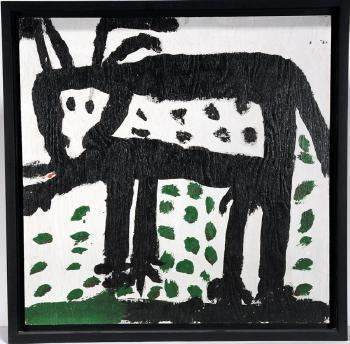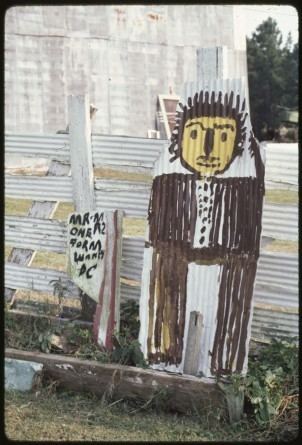Nationality American Role Artist Known for Painting Died 1995 | Movement Outsider Art Period Outsider art Name Mary Smith | |
 | ||
Born 1904 Brookhaven, Mississippi | ||
Mary Tillman Smith (1904-1995) was a self-taught painter. Her work is shown throughout the world and collected by museums such as the Metropolitan Museum of Art and the Smithsonian American Art Museum. She lived and worked in Mississippi most of her life. She is considered a southern self taught artist, a group that includes Thornton Dial and Nellie Mae Rowe. Her work was heavily promoted by the curator and collector William Arnett.
Contents

Life
Smith was the daughter of sharecroppers. Smith was the third of thirteen children and at an early age had a serious hearing impairment. She completed a fifth-grade education, despite the isolation and loneliness her handicap caused her. Throughout her childhood, Smith "found an outlet in drawing."
Smith married twice, once in a short marriage to Gus Williams in 1922 and then to John Smith sometime in the 1930s. Her second marriage was also short, ending when Smith saw that her tenant-farmer husband's year-end settlement was grossly short. Her complaints about the mistake, a more than $1,000 difference, led to John Smith "sending her away." Smith then moved to Hazelhurst, Mississippi, to live on her own. In 1941, she gave birth to her son, Sheridan L. Major, though she did not marry his father. Smith worked as a gardener and did other domestic work until she retired in the 1970s.
In 1985, Smith suffered a stroke that left her speech and writing impaired. She was slowed down to producing only two works a day after her stroke. Her work output slowed, Smith made less money as time went on, and she stopped painting in 1991. She died penniless in 1995.
Work
Smith began painting in the late 1970s. She transformed her home and garden, an area of approximately one acre into a "highly public form of spiritual autobiography." Her work allowed to express the ideas that had been in her head for years. Once Smith's work was discovered by art collectors, she struggled to keep up with the demand.
Smith's work was often created on readily available materials, such as plywood, corrugated tin and other recycled parts. In her earlier work, she often used only one or two colors of paint. Her stylized imagery "recalls West African ceremonial masks" and many are allegorical. Her art has been likened to artists like Jean-Michel Basquiat. Her work was also very personal in nature, one of her favorite themes was to paint portraits of family, friends and neighbors. Many of her works feature figures with their arms upraised, an image associated with ectasy or spiritual enlightenment.
Smith's later work consisted of geometric compositions with more colors and interesting juxtapositions of positive and negative space. Her work sometimes incorporated text along with her imagery. These textual parts of her work were cryptic and created a "personal painting vocabulary" which "documented and celebrated her world, both religious and secular."
